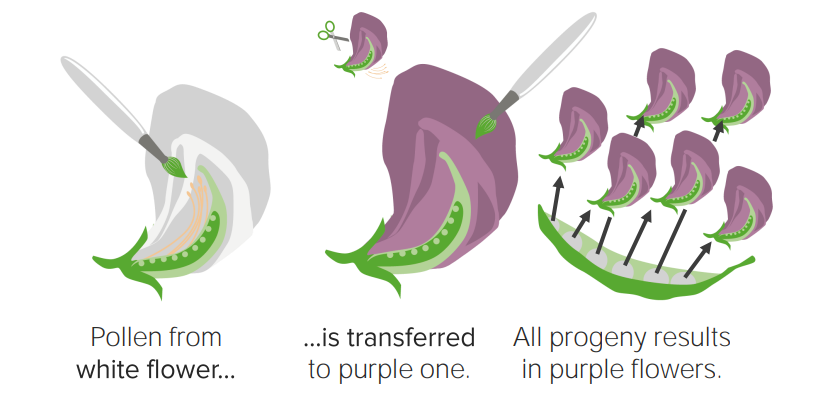Playlist
Show Playlist
Hide Playlist
Medical Genetics History
-
Slides 01 Introduction IntroductionToMedicalGenetics.pdf
-
Download Lecture Overview
00:00 Hello. In this lecture, I’d like to give you an introduction to the scope of our medical genetics course. 00:08 We’ll begin by looking at genetic medicine prior to the 21st century. Previously, we did not have nearly as much technology available. I’m sure you’re aware of that. It used to be considered detection and treatment of a few phenotypically displayed hereditary diseases. Well now, we have a lot more technology available to us with the sequencing of the human genome. But previously, we used techniques like prenatal and perinatal diagnosis, which of course we still use today as well as analysis of birth defects once a child is born. 00:47 In addition to that, we will treat abnormalities that are detected during development. But again, the key here is that they have to have a phenotypic expression. Now, in the current day of medicine, we have DNA sequencing available to us and genetic testing. Because of these, there’s a whole new field of genomics coming into play. 01:11 In genomics, we’re now discovering what each of the pieces of the human genome are doing, what each gene does. 01:19 As you’ll recall from our molecular genetics course, we also need to consider what all the proteins do or where they come from, so the field of proteomics has come into play. So now, with these advents and more and more technology becoming available, we’re able to personalize healthcare. So personalized healthcare, meaning we can do genetic testing and figure out what people’s predispositions might be. We’re able to predict or add a little more precision to our treatment of individuals because as we learn more and more about the genome, then we’re able to have more information and treat. Then we have the concept of previvorship. 02:04 If you have an individual who has chosen to be tested genetically for conditions, then we can possibly intervene before that condition even shows up. So we have the potential application also of so many gene therapies that are in play, under research as we discover more and more about the genomes. So the bottom line here is that the advent of genomics and proteomics, we’re getting many, many more tools to utilize in medical genetics. 02:36 So the two fields go hand in hand. We’re going to be applying analysis of human genome and its products. 02:45 So in genetics today, we need to consider gene interactions, how one gene affects another gene as well as how gene expression is controlled. You’ll recall from our molecular genetics course, there were many little proteins, initiation factors, and transcription factors involved in the whole process of getting a gene to be expressed. 03:09 Each of those are coded for by genes. So, understanding how each of those genes interact with each other is going to open up so much more in the field of genetic medicine. We also have different variants of each gene, so gene variations throughout the population and gene variations between, whether you’re having maternal or paternal inheritance of a particular disorder. In addition to that, we have environmental interactions to consider. 03:40 Epigenetics is a huge field that we’re understanding affects gene expression and of course, our medical genetics field.
About the Lecture
The lecture Medical Genetics History by Georgina Cornwall, PhD is from the course Introduction to Medical Genetics.
Included Quiz Questions
Which example best describes the term previvorship?
- A patient with a cancer gene is treated before cancer develops.
- Smoking cigarettes alters the proteins on certain genes, increasing or decreasing their expression in future generations.
- One gene codes for a transcription factor that controls the transcription of another gene.
- Genetic diseases with phenotypic expression can be diagnosed after birth.
- The dominant allele overpowers the recessive allele and appears as the phenotype.
Which of the following represents the greatest advancement in medical genetics to date?
- The sequencing of the human genome
- Treatment of developmental abnormalities
- Analysis of birth defects after birth
- Pre-natal and peri-natal diagnoses
- Ability to visualize skeletal deformities
Customer reviews
5,0 of 5 stars
| 5 Stars |
|
5 |
| 4 Stars |
|
0 |
| 3 Stars |
|
0 |
| 2 Stars |
|
0 |
| 1 Star |
|
0 |






